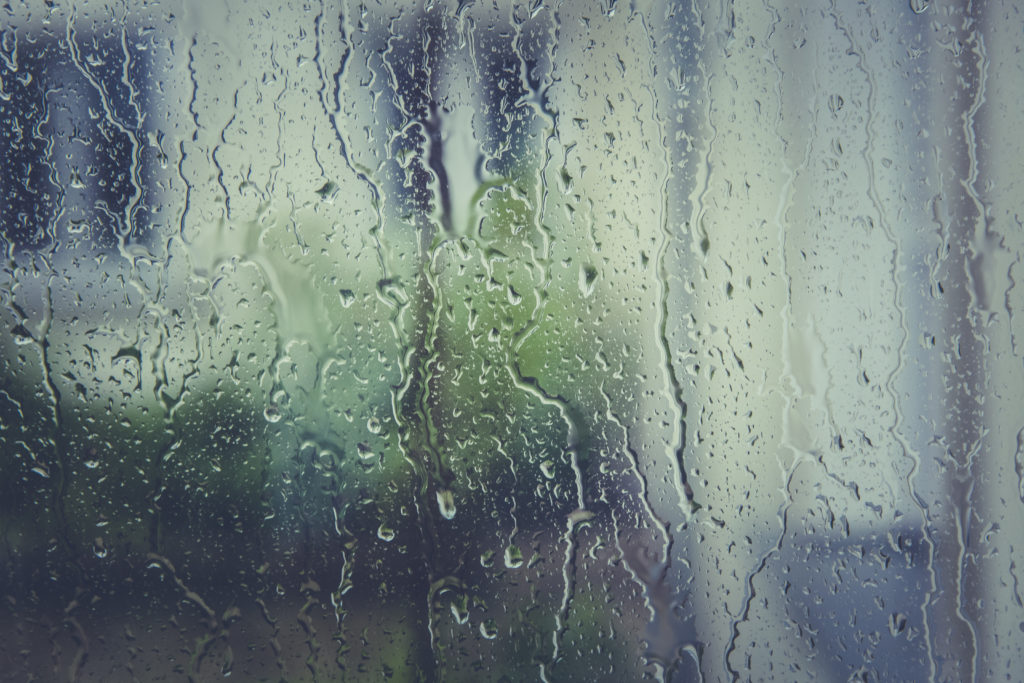Home → Windows → Windows FAQs → Why do I have condensation on my windows?
Many of us are familiar with condensation on the inside of our windows. It’s a common problem in Britain, even for those of us living with new windows or in new homes. Why does condensation form? Shouldn’t we have solved that particular issue by now, given all the headaches it can cause?
The factors involved in condensation go beyond the technology of the window units alone. The moisture comes from all kinds of normal daily activities, with a number of environmental and lifestyle factors making it more or less likely to occur. While modern double and triple glazing can certainly help with the issue, they won’t solve it alone.

In this guide we will over the essential of condensation on windows:
- What causes condensation
- Why condensation is bad for health
- How to stop condensation
What causes condensation on different surfaces?
Condensation is the result of water vapour in the air cooling into water droplets when it hits a cold surface. It normally forms on the coldest surface in the room, which is often a window but could be anything in theory.
Water vapour is produced in any number of ways, from breathing to taking a shower (we’ll look at more causes in the next section). It’s simply not feasible to prevent water vapour from being produced at all. Upon its release, water vapour is absorbed into the air, but the air can only hold so much before it gets saturated.
As soon as saturated air hits a surface that’s cold enough, some of the air that it’s holding will condense. The colder the surface, the more vapour will condense and the more condensation will appear. Windows often hold condensation as they tend to be the coldest surface in a room (glass doesn’t retain heat very well). While double and triple glazing will stay warmer than single glazing, they’ll still be colder than most other surfaces.
Condensation isn’t limited to windows either; it can occur on any cold surface, particularly in spots where moisture is likely to get trapped:
- Windows covered with blinds or curtains
- Behind sizable furniture placed against a cold wall
- Inside a fitted wardrobe that’s located on an external wall
How is water vapour produced in the home?
There are a long list of activities that can produce water vapour, many of which are unavoidable in the course of normal life. We’ve already mentioned the simple act of breathing (have you ever noticed a window or mirror steam up when you stand near it?) but there are many others:
- Cooking (especially if you’re boiling water)
- Washing up or opening a dishwasher
- Taking a bath or shower
- Washing and drying laundry
- Heating your home (most heaters produce some excess vapour)
Even growing indoor plants releases more water vapour than you might think, so it’s truly impossible to stop it occuring. That said, you can conduct many of these activities in such a way that less vapour is produced. We’ll look at some of those methods below.
What factors make condensation more or less likely?
Along with the high levels of water vapour in the air, several other factors influence the likelihood of condensation forming on your windows. Key considerations include the temperature difference between the inside and outside of your home, the temperature of the window’s inner surface relative to the rest of the room, and the level of ventilation.
The temperature difference is particularly noticeable when it’s very cold outside and you’re heating your home. Since windows are always a point of heat loss regardless of their quality, they will be colder the lower the external temperature is. This effect is especially marked with single glazing, as it lacks the insulating layer that double and triple glazing have to prevent heat from escaping.
With insulating glazing, the inner pane of glass remains much closer to the room’s temperature. Even if some condensation forms, there will be less moisture if the window is warmer. This explains why condensation is most likely to appear in unheated rooms of the house. Although the temperature difference might not be as great as in a heated room, the inner surface of the glass will be colder, making it more likely for water vapour from warmer parts of the house to condense there.
Ventilation also plays a crucial role. Effective ventilation helps expel moist air outside, thus keeping the indoor air drier. Newer windows, while better sealed against draughts and more energy-efficient, can still experience condensation issues due to this improved sealing, which makes it harder for water vapour to escape.
With better-sealed windows, you may need to be more proactive in managing indoor moisture levels. Later, we will explore methods to effectively remove water vapour from the air.

Does double glazing help?
As you’ll have picked up by now, double glazing is undoubtedly beneficial when it comes to condensation because the inside temperature of the glass stays higher. We’ve seen that double glazing isn’t enough to eliminate the problem entirely, but less moisture on the glass means that the area around the windows will stay much drier than it would with single glazing.
This, combined with the energy efficiency benefits that double glazing gives in colder weather makes it a no-brainer. It’s also advisable to look for double glazed windows with insulating seals made of plastic rather than aluminium and a layer of argon gas rather than air, as these factors will reduce heat loss between the two panes even further.
One other subject to touch on before we move on is the particular case of double glazing that has been created by adding a second pane to single glazed windows. It’s possible that you’ll see condensation forming on the inside of the cavity, which needn’t concern you as long as it’s only a small amount. This just means that a little moisture was in the air that was trapped inside the glass when the second pane was added. If you see moisture inside purpose-made double glazed windows, however, it’s a sign that your seal is broken and needs repairing.
How to reduce condensation on your windows
You can’t stop water vapour from occurring inside your house, but there are a number of ways to stop it from causing problems. The key is in good ventilation and minimising the amount of water vapour that can move from room to room.
The key steps to reducing condensation on the windows in your home are:
- Improving ventilation
- Reducing moisture
- Installing double or triple glazed windows
In the rooms where you’re likely to have a lot of water vapour, like the kitchen and any bathrooms, you’ll need to be proactive. If you can, leave windows open when you’re showering or boiling water, but at the very least make sure your extractor fans are working properly. It’s also wise to boil only as much water as you need and to shower for the minimal amount of time.
As well as ventilating these rooms, it’s a good idea to minimise amount of water vapour that can escape into your other rooms. Keep the doors shut when the rooms are in use, and invest in good draft excluders to prevent the movement of moist air into a drier part of the house.
If you’re aware of condensation becoming an issue, don’t be afraid to leave a few windows open in the worst affected parts of the house. It might seem counterintuitive to open a window when you want to keep the house warm, but doing so will let moist air escape and allow dry air to come into the house. Even if this dry air is initially colder than the warm, moist air, it’s actually much easier to heat, which means your heating system won’t have to work so hard in the long run.
For information on how to stop condensation in conservatories specifically, be sure to consult our guide.


